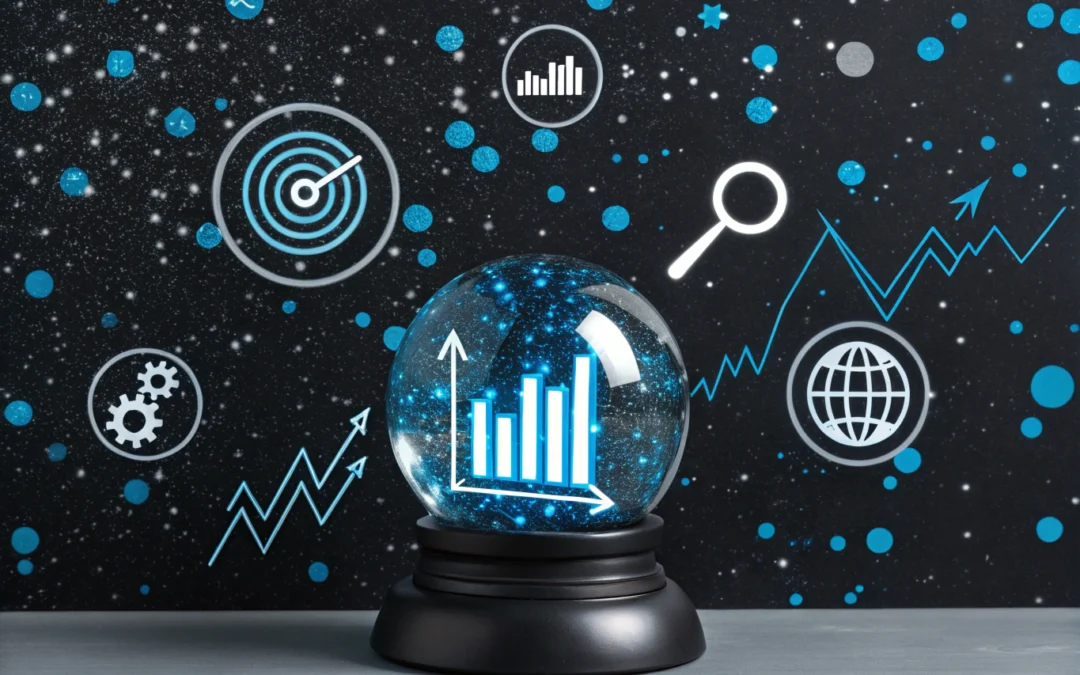Decoding the Crystal Ball: AI and Sales Forecasting
We’ve all been caught in the web of AI’s promises—some forecasting the dawn of an era where AI can predict just about anything, including your next sneeze. Yet, as we stand amidst both marvels and missteps, one domain where AI is making tangible strides is sales forecasting methods.
Sales forecasting is essentially about peering into the future and making educated guesses—it’s the modern-day equivalent of reading tea leaves, just with more data and less mysticism. But how exactly are AI and its digital cousins reshaping this process?
AI: The Intern with a Crystal Ball
Imagine AI as that keen intern who doesn’t sleep, tirelessly sifting through reams of sales data, economic indicators, and customer trends to extract patterns that would take a human lifetime to uncover. It’s not about divine foresight; it’s about meticulously connecting dots, sometimes in ways we humans wouldn’t think of.
But let’s not get carried away. AI’s crystal ball, while impressive, is still a bit foggy. It can identify trends and anomalies—pointing out that sales dipped last Tuesday because of the unexpected monsoon—but it’s not yet capable of understanding the “why” behind these trends without human input.
Human-AI Collaboration: The Key to Accurate Forecasting
The real magic happens when AI and humans join forces. Consider AI as the intern who does all the data grunt work, freeing up the human experts to do what they do best: apply context, intuition, and experience. Together, they craft forecasts that are not only data-driven but also grounded in real-world market understanding.
This partnership is crucial. AI might suggest that increasing inventory in winter could lead to higher sales. Yet, it’s the human who recalls last year’s ill-fated winter promotion and adjusts the strategy accordingly. This dynamic duo approach ensures forecasts are robust and actionable.
Challenges and Considerations
While AI excels at crunching numbers, it can sometimes miss the nuances of human behavior and market sentiment. It’s like trying to explain the concept of “holiday spirit” to a robot—it’s just not the same without a human touch.
Moreover, the quality of AI-driven forecasts heavily depends on the quality of input data. Garbage in, garbage out, as they say. Ensuring data accuracy, relevance, and timeliness remains a human responsibility.
Actionable Insights for Your Business
So, how do you capitalize on this AI-human collaboration for your sales forecasting? Here are some pointers:
- Invest in Quality Data: Ensure your data sources are reliable and regularly updated. AI’s output is only as good as its input.
- Embrace Augmented Forecasting: Use AI to handle quantitative tasks while relying on human expertise for qualitative insights.
- Iterate and Adapt: Continuously refine your forecasting models based on past performance and emerging trends.
- Train Your Team: Equip your team with the skills to interpret AI-driven insights and integrate them with strategic decision-making.
In the end, remember that AI is here to assist, not replace. It’s the intern eager to learn, ready to help, but still in need of guidance. Together, you can gaze into the sales crystal ball with greater clarity and confidence.
Checkout ProductScope AI’s Studio (and get 200 free studio credits)

